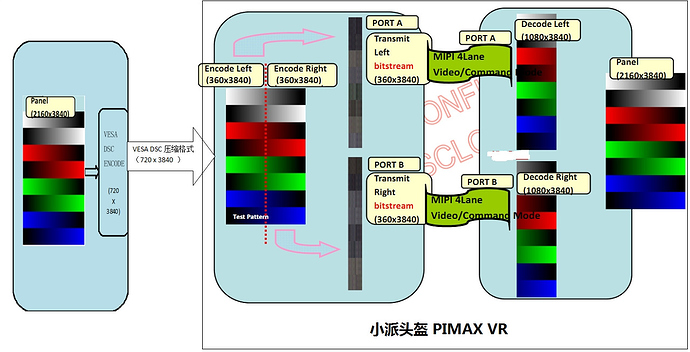Well my math is correct for V1-V2, for V3 I need to connect some dots still.
Idea was for sure to give 4K DSC signal(1080x3840) to Driver IC(where is integrated DSC decoder/scaler), how it works with ANX7530 I am not sure, it is maybe just signal inversion 2160x3840, so it uses SBS to send to one eye 1080x3840, not 3840x1080. My math is correct, check pixel clocks, same res just horizontal and vertical res are inverted in signal.
Yep, I don’t need to redo anything:
This is for DSC 3:1.

Also read again this:
Makes sense now that they did put 3840216080 number, does it? It confused me before, I thought they connect only one panel to test it at native res, but it is for DSC 99% sure.